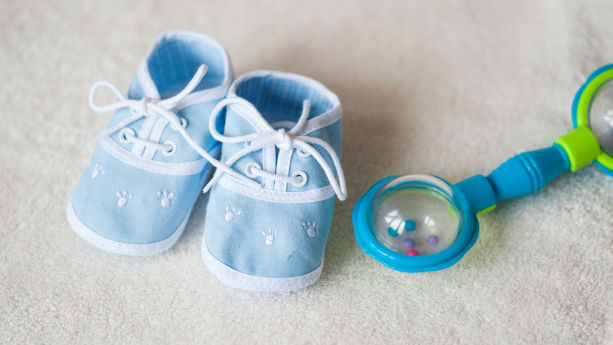
Children’s products are subject to various regulations in the United States. These cover safety standards, flammability, chemical restrictions, traceability, warning labels, certification, and testing requirements.
The requirements differ depending on the type of children’s product, but there are measures that cover not only toys, but also children’s apparel, furniture, and so on.
Children’s products are also subject to regulations that are not specific to a certain age group but are applicable to consumer products in general. Nonetheless, these are equally important.
Content Overview

FREE CONSULTATION CALL (US, EU & UK)
- Request a free 30-minute call with Ivan Malloci to learn how we can help you with:
- Find product requirements
- Certification and labeling
- Lab testing
Consumer Product Safety Improvement Act (CPSIA)
The Consumer Product Safety Improvement Act (CPSIA) sets requirements for children’s products, that is products intended primarily for children up to 12 years of age. This includes products such as:
- Infant and toddler products
- Toys
- Child care articles
- Certain art materials and craft kits
Requirements
The CPSIA generally requires:
- Compliance with relevant children’s product safety rules
- Testing by an accredited CPSC-accepted test lab
- Children’s Product Certificate (CPC)
- Tracking label
- Warning labels (if relevant)
- Registration form (for durable infant and toddler products)
Safety standards
The CPSIA requires compliance with relevant safety standards. Some standards are product-specific, such as these two:
a. 16 CFR Part 1217 – Safety Standard for Toddler Beds
b. 16 CFR Part 1237 – Safety Standard for Booster Seats
Other standards are relevant for all products as they restrict or ban substances such as phthalates and lead:
a. 16 CFR Part 1303 – Ban of Lead-Containing Paint and Certain Consumer Products Bearing Lead-Containing Paint
b. 16 CFR Part 1307 – Prohibition of Children’s Toys and Child Care Articles Containing Specified Phthalates
Note that some standards incorporate ASTM standards by reference, thereby mandating compliance with the requirements of those standards.
Flammable Fabrics Act (FFA)
The Flammable Fabrics Act (FFA) sets requirements for several types of consumer products, including products for children. This includes:
- Children’s sleepwear
- Clothing textiles
- Vinyl plastic film
- Carpets and rugs
- Mattresses and mattress pads
- Upholstered furniture
The FFA includes two standards that are specific for children’s sleepwear, namely 16 CFR Parts 1615 and 1616. We explain them below.
16 CFR Part 1615 – Standard for the Flammability of Children’s Sleepwear: Sizes 0 Through 6X (FF 3–71)
16 CFR Part 1615 specifies requirements for the flammability of children’s sleepwear sizes 0 through 6X (FF 3–71).
It requires importers and manufacturers to:
- Have the sleepwear undergo flammability testing
- Ensure the sleepwear is properly labeled
- Keep proper records
16 CFR Part 1616 – Standard for the Flammability of Children’s Sleepwear: Sizes 7 Through 14 (FF 5–74)
16 CFR Part 1616 sets requirements for the flammability of children’s sleepwear sized 7 through 14 (FF 5–74). Like 16 CFR Part 1615, this part also requires:
- Flammability testing
- Proper labeling
- Recordkeeping
Children’s Product Certificate
Importers and manufacturers of products covered by the FFA are generally required to draft a General Certificate of Conformity (GCC). However, children’s products must be accompanied by a Children’s Product Certificate (CPC), not a GCC, even if they fall under the scope of the FFA.
16 CFR Part 1120 – Substantial Product Hazard List – Drawstrings in Children’s Upper Outerwear
16 CFR Part 1120 lists substantial product hazards, and requires children’s upper outerwear sized 2T to 16 with one or more drawstrings to comply with the requirements of ASTM F1816-97, which is incorporated by reference.
Specifically, this part requires that:
a. Coats sized 12–14 must not have hood and neck area drawstrings.
b. Coats sized 13–15 are subject to the requirements regarding waist and bottom drawstrings.
16 CFR Part 1262 – Safety Standard for Magnets
16 CFR Part 1262 aims to protect children from accidentally ingesting hazardous magnets and products containing such magnets, including jewelry and non-children’s products such as stress relief products.
Note that this part does not cover toys subject to 16 CFR Part 1250 because these products are covered by ASTM F963 which already has magnet-related requirements.
Requirements
This part requires separable or loose magnets fitting into a cylinder per 16 CFR Part 1501.4 to have a flux index of less than 50 kG2 mm2 when tested according to the instructions set in 16 CFR Part 1262.4.
16 CFR Part 1261 – Safety Standard for Clothing Storage Units
The CPSC drafted 16 CFR Part 1261 to address the requirements set in the STURDY Act and protect children from hazards related to clothing storage units.
Specifically, the requirements in this part are meant to protect children up to 6 years old from injuries and deaths related to the clothing storage units tipping over.
Requirements
Importers and manufacturers of clothing storage units must:
- Comply with the requirements of ASTM F2057-23
- Perform stability tests
- Attach safety alert symbols and warning labels to the products
- Include an anti-tip device
Bisphenol Restrictions for Children’s FCM (21 CFR – FDA)
21 CFR sets restrictions regarding Bisphenol A (BPA) in baby feeding bottles and other food contact products meant for children. Although it may also have other requirements specific to children’s products, the ones below were the only ones that we were able to find.
You can find more information on general requirements for food contact materials in the United States in this guide.
21 CFR Part 175 – Coatings
12 CFR Part 175 restricts the use of epoxy resins containing BPA in coatings of packaging for liquid and powdered infant formula.
21 CFR Part 177 – Baby feeding bottles
21 CFR Part 177 prohibits using polycarbonate resins, which contain BPA in infant feeding bottles, spill-proof sippy cups, and their closures and lids.
Labeling of Hazardous Art Materials Act
The Labeling of Hazardous Art Materials Act (LHAMA) sets requirements for art materials often used by children, such as:
- Paints
- Crayons
- Colored pencils
- Glues
- Adhesives
- Putties
LHAMA incorporates by reference ASTM D4236, which sets requirements as the following:
a. Submitting art material formulation for a chronic hazard review
b. Attaching relevant warnings and labels, such as chronic hazard labeling, where necessary
c. Including on the product, container, or accompanying documents a statement of conformance to ASTM D4236
Poison Prevention Packaging Act
The Poison Prevention Packaging Act (PPPA) aims to protect children by making it difficult for children under 5 years old to open the packaging of products that are deemed dangerous (some types of supplements, for example).
The PPPA requirements include:
a. Compliance with standards described in 16 CFR Part 1700.15
b. Proper labeling of non-complying packaging to avoid usage by children (e.g., “Package Not Child-Resistant”)
California Proposition 65
California Proposition 65 restricts around 900 listed substances in consumer products in California. It also covers children’s products, such as the following:
- Toys
- Childcare articles
- Jewelry charms for children
- Baby bottles
- Baby bibs
Compliance with California Proposition 65 means ensuring that your products do not contain restricted substances above the allowed limits. Alternatively, you must provide a warning on your product.
US Law Label
The US Law Label is a state regulation in the United States, the labeling requirements within which vary between states. It covers products that contain filling materials, including children’s products, such as the following:
- Baby carriers
- Playmats
- Stuffed toys
- Child’s car seats
It requires the inclusion of information such as the following:
- A “Do Not Remove” statement
- Percentage by weight of filling materials
- Uniform Registry Number (URN)
- Name of the importing company
- Which country the product was made in
Other State Regulations for Children’s Products
Many other states have regulations that are also relevant to children’s products. We list below various examples of such regulations:
a. California – Cadmium in Children’s Jewelry Law
b. New York – A01554: Toys and child care products containing phthalates
c. Illinois – Toxin-Free Toddler Act
d. Washington – Children’s Safe Product Act
e. Arkansas – Children’s Product Safety Act
f. Maine – Toxic Chemicals in Children’s Products Law
g. Minnesota – Toxic Free Kids Act
h. Connecticut – Act Concerning Banning Bisphenol-A in Children’s Products and Food Products
You can find more examples of state regulations for children’s products in this guide.
FAQ
How do I know if a children’s product is safe?
As an importer or manufacturer, it’s up to you to identify the applicable regulations and standards and then ensure that your product is designed accordingly. This means that you must consider risks such as sharp points, strangulation, and small parts when designing the product.
In addition, you must create label files, and ensure that these are printed on the product.
Finally, lab testing is mandatory for all children’s products in the United States.
How do I know if a product is deemed to be a children’s product?
The CPSIA covers products intended for children aged 12 years old or younger. Hence, this includes everything from toys to baby cots and baby carriers.
Keep in mind that the CPSC has published guidelines for what is to be considered a children’s product. Brands and manufacturers cannot arbitrarily determine the suitable age group for a certain product. Products that are commonly recognized as being children’s products must always comply with the requirements that cover the relevant age group.
For example, you cannot say that a playmat is only suitable for children older than 12 years and thereby avoid the requirements.
Who is responsible for ensuring compliance?
This depends on the regulation, but in general, it can be said that the US company manufacturing or importing the product is primarily responsible. In practice, this means that domestic manufacturers and importers must create label files, issue the CPC, and book lab testing.




















